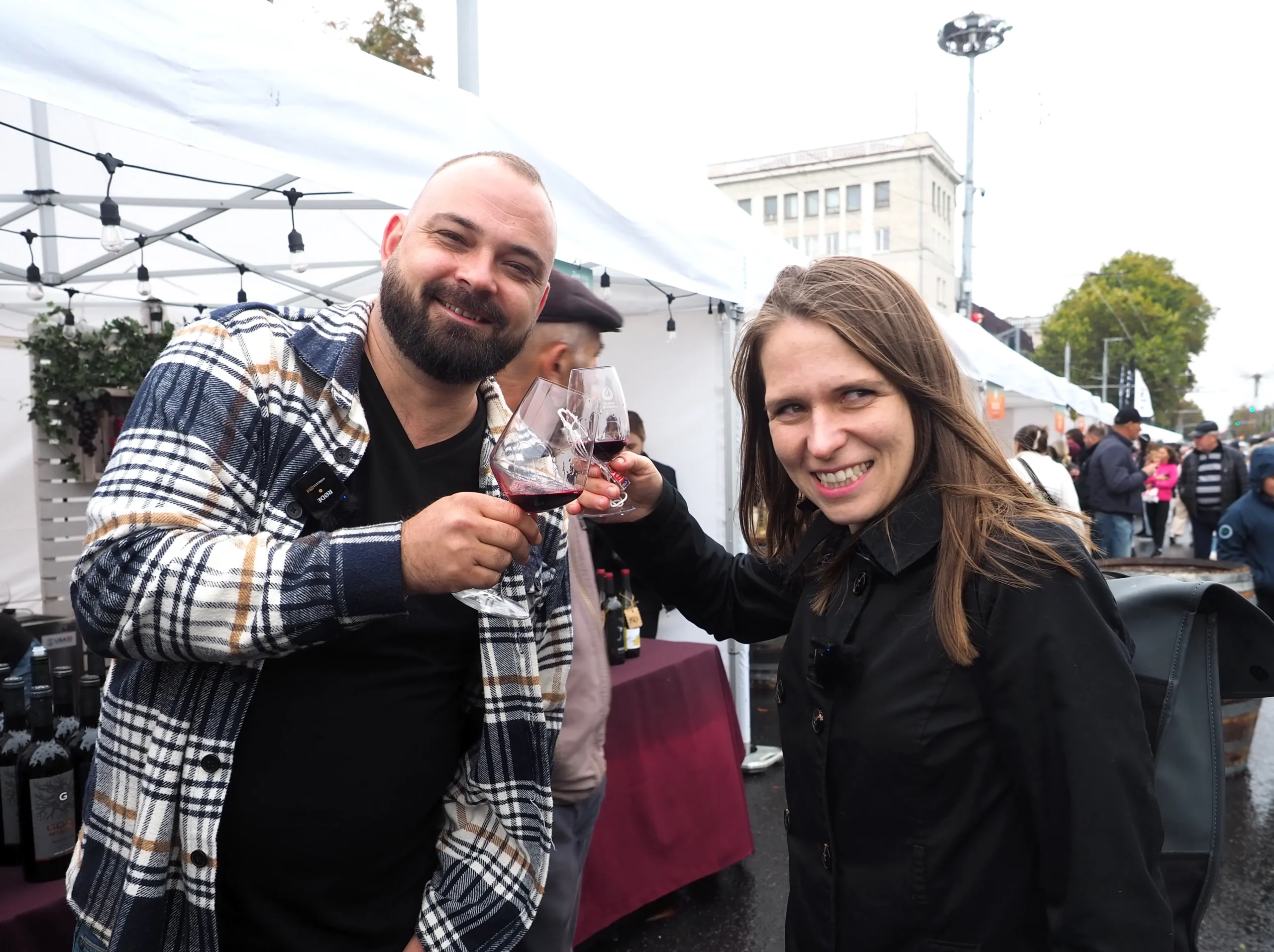
Why are Moldovans so obsessed with wine?
Moldova grows the most wine grapes in the world per capita. We went to find out why.
That’s how we make extra cash
At the end of the summer, Moldova transformed into a giant vineyard. Long rows of ripe grapes stretched to the horizon all around the country. They were everywhere! By the Dniester River, an elderly couple sold their juicy wild fruit on the field. “That’s how we make extra cash,” the pensioners explained. We picked the grapes and paid around half a US dollar for a couple of kilos. They tasted like sugar cubes with thick seeds and sour peels.
Another day, a farmer in the Northern part of the country handed us a bagful of grapes like breadcrumbs and walked away. By the border with Romania, old ladies had laid their fruit and vegetables on the street, hoping to attract visitors from Romania. When we told them we didn’t have any cash, they handed us a few kilos, despite our resistance. We even found wild clusters of grapes in the forest and picked them like mushrooms.
Grapes ripen in September, first in the South, and are available until October in warm autumn weather.
But the berries don’t just make a healthy snack for hikers. Moldovans love their wine. Most families in the countryside have their own grape-crushing device (locals call it “zdrobilka”) and wine-making equipment.
People handed us homemade bottles full of grape juice — or “must”, as they call it. “Must” is available after harvest only for a month or so. Then most families have their new wine ready for drinking in November. Commercial wine takes longer.
For a couple of months, the sweet smell and wasps covered this land like it was the most natural thing in the world. Most Moldovans may not realize how special that is.
But it is, and there is data to back it up.
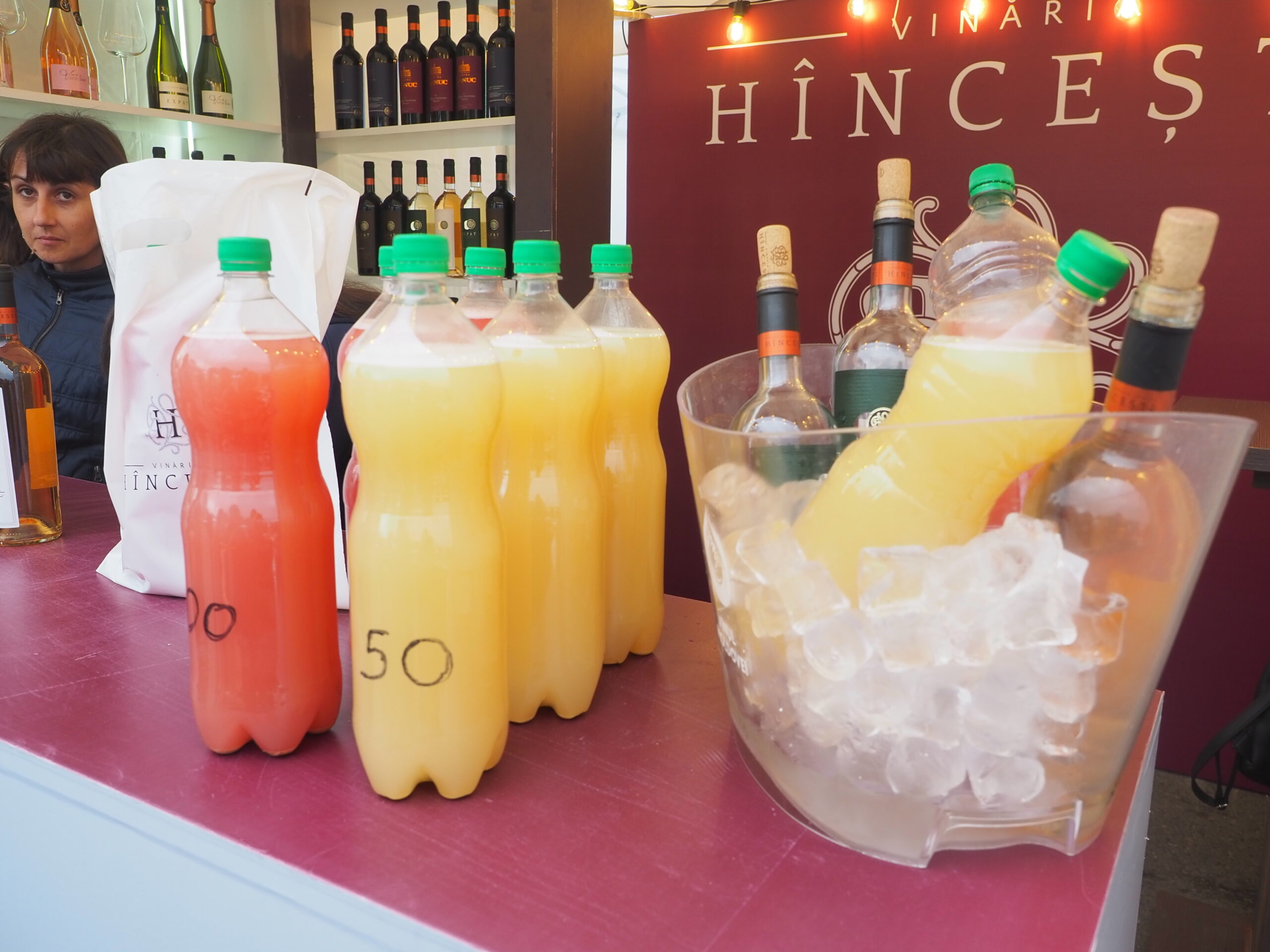
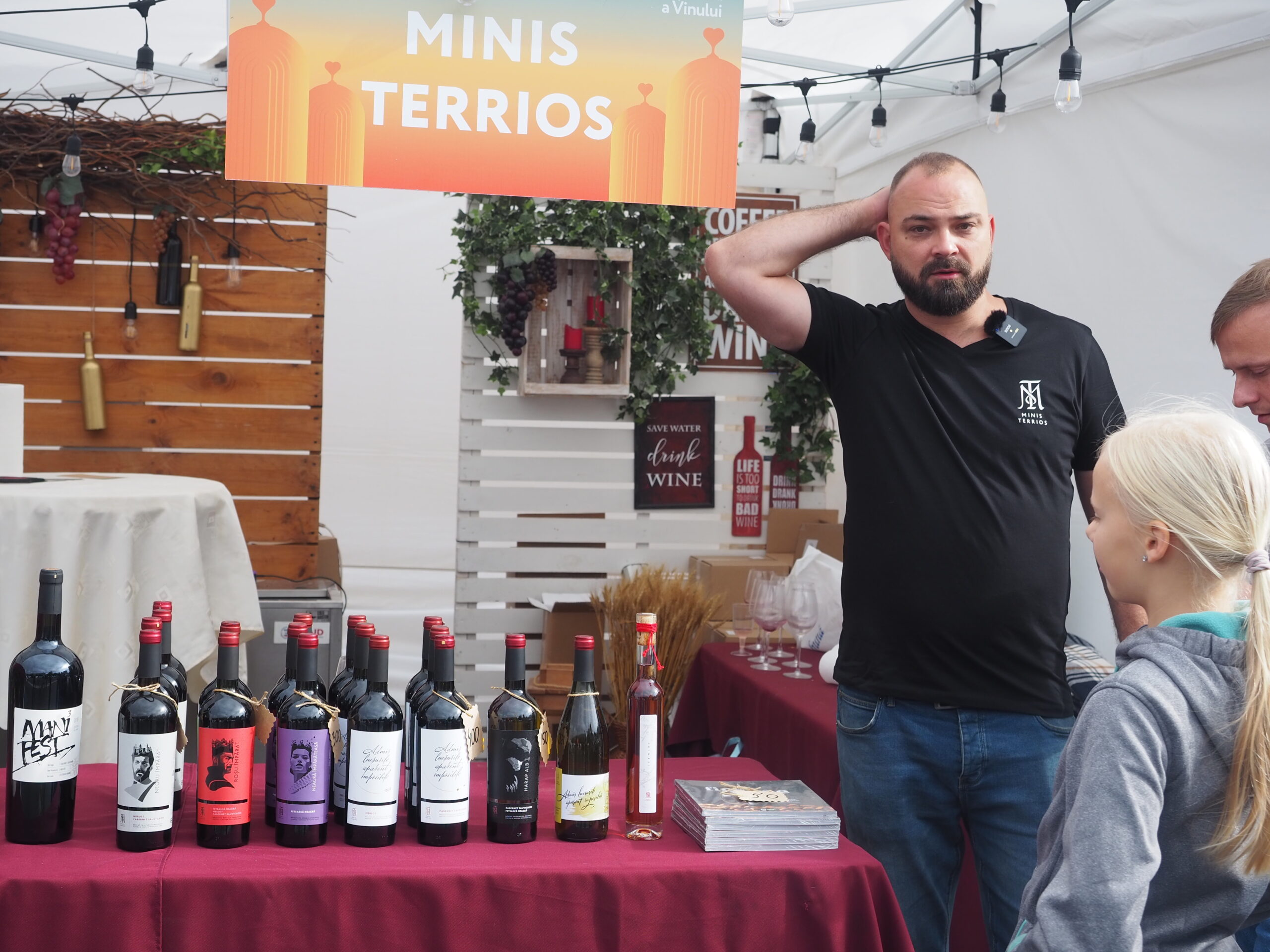
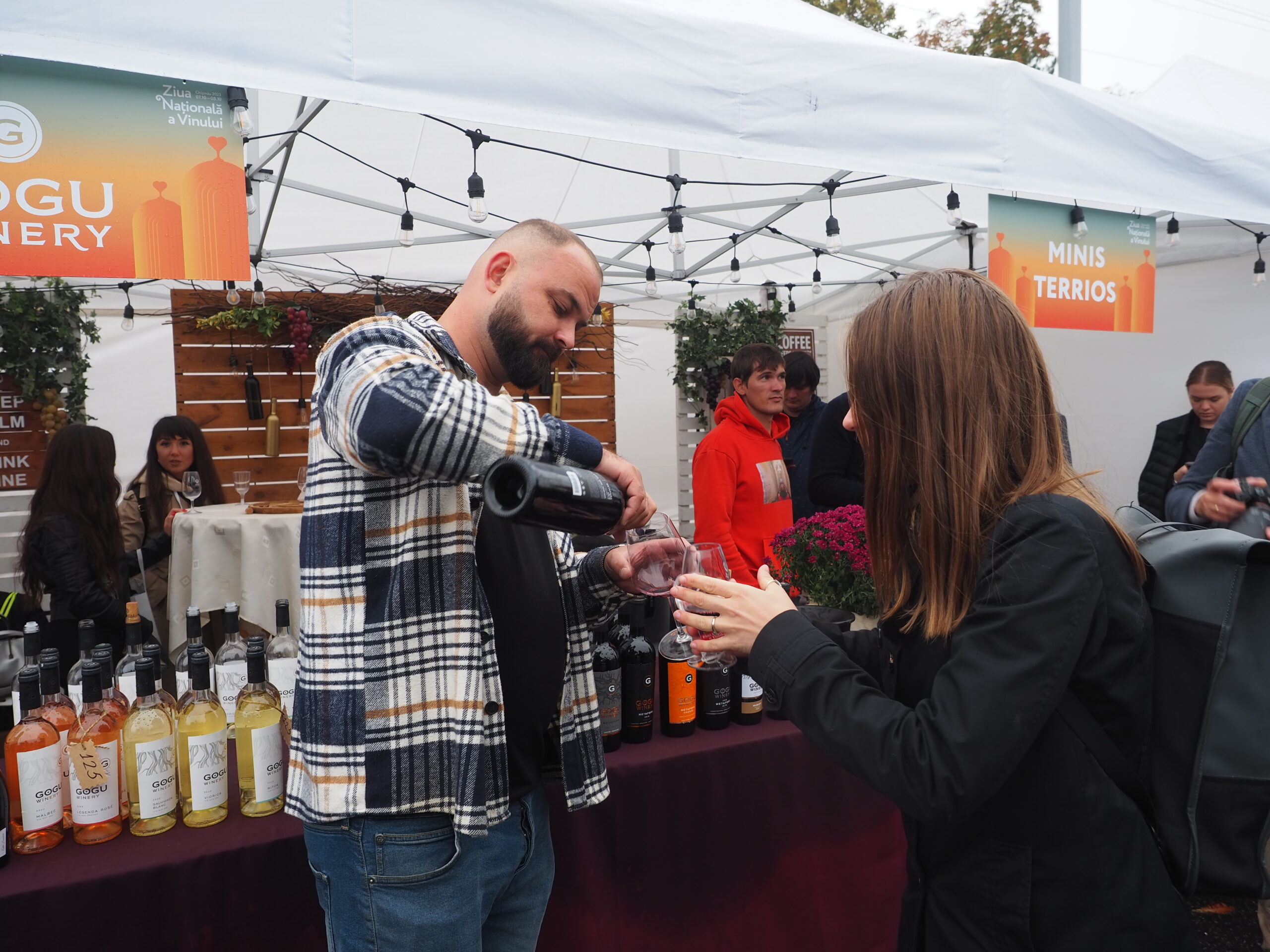
“Everyone here makes wine.”
Officially, there are 274 vineyards in Moldova. Unofficially, almost every family ferments their grapes. In relation to its population, Moldova has the most land under vines in the world. In comparison, the European Union’s biggest grape grower, Spain, has one hectare of vines for every 52 people. In Moldova, there’s one hectare of grape wines for every 20 people, according to the National Bureau of Statistics of the Republic of Moldova. For every 20 people, there is nearly a large football-field size of grapes growing in this country. Imagine the quantity! Moldovans even have a Law on Vine and Wine that sets the standards for the producers. The purpose of the law is to protect the winemakers and align the production with international standards. It also aims to improve the wine consumption culture and protect the local grape varieties.
“Everyone here makes wine,” said Andrei Cibotaru, the country’s best-known wine blogger. We met him at the event of the year for Moldovans, a National Wine Day, in the capital, Chisinau. Around 90 Moldovan winemakers offered their produce there. There was music, laughter, and a lot of pride there that day. “Most of us grew up by the vineyards in the countryside,” Cibotaru said. “Everyone in Moldova is somehow connected to winemaking. Either they make wine, or they work in a related industry.”
He takes part in international wine competitions. This year, Cibotaru was one of the judges at the Berliner Wine Trophy, Germany’s most influential wine competition. Wine is embedded in Moldova’s culture, he explains to us. It plays a big part in the economy. It’s the country’s business card. “I don’t have to explain what Moldova means in wine competitions,” Cibotaru said. “Usually, people have heard the stereotypes that Moldova is the poorest country, and so on. With wine experts, it’s different.” The wine community knows that Moldova makes good wine, Cibotaru explains. He doesn’t have to explain it to them.
5,000 years of winemaking
Moldovans have been making wine for over 5,000 years, proven by a recently discovered grape seed, Vitis Vinifera, now preserved in a museum in Romania. Archaeological findings show that Greeks and Romans brought their winemaking traditions and grape varieties to Moldova.
The peak time for Moldova’s viticulture was during the reign of Stephen the Great in the fifteenth century. The dominant Orthodox religion also contributed to the preservation and development of winemaking under Ottoman rule. The wine is drunk in church rituals, in temples, and in monasteries.
The Russian imperial family and the British royalties drank Moldovan wine. In 1878, Moldova’s red wine from Purcari received the gold medal at the World Exposition in Paris.
During the Soviet Union, Moldova had the largest wine production in Soviet territory. Every second bottle of wine and every third of sparkling wine were produced in Moldova. All this changed once Moldova gained independence and started looking towards the West. In 2006 and 2013, Russia imposed embargoes on Moldovan wines. At first, it was a shock to the market, but soon, Moldovan winemakers turned to new markets. Once with 80% of exports to Russia, Moldova now exports all over the world.
“Until recently, Moldova was the fifth producer of wines in the world,” said Cibotaru. “But after Russia’s embargo, we are now in the top 20.”
How does Moldovan wine taste?
“Moldova has unique regions with specific microclimates,” sommelier Maxim Levcenco told us. “Our black soil, which covers most of the land, is a blessing, making it perfect for winemaking.”
Levcenco passed the two first levels of wine courses and recently began the third. How would he describe Moldovan wine?
“It’s in the aroma,” Levcenco poetically continued. “The work-in-process with the grapes, the quintessence of the winemaking process. Our climate, fertile soil, and unique culture all play a role. It’s something you can feel, something you can smell — the essence of Moldova in a glass!”
In one of the booths at the wine festival, Dan Prisacaru, a winemaker at Minis Terrios, is pouring his wine to another customer. He’s been doing this for two days, and he’s exhausted. It’s loud and messy. The weather is turning cold and windy. The grape season is now clearly over.
Some come up to Prisacaru and ask him about his winemaking technique and his grape varieties, and others just want “something sweet”. Prisacaru has been making wine for ten years, a relatively short time in this field. He pours and speaks, and keeps sipping from his glass. “Moldovan wines have a special jamminess thanks to our hot summers,” he concludes.
Wine sums up this country’s history, passion, and character. For Moldovans, it’s even rude to refuse to sip their wine. It’s as if you would refuse to accept or acknowledge them. So we, too, keep sipping, until our heads spin.
Wine sums up this country’s history, passion, and character.
Moldovan grape varieties:
Feteasca Alba is a traditional Romanian and Moldovan grape variety grown in most vineyards. It’s a relatively young variety, brought in after 1920. It’s a white grape variety. Wines produced from these grapes are fine and delicate, light, and fresh, with floral aromas. It is cultivated in most regions of Romania, Moldova, Hungary, Ukraine, and Germany.
Feteasca Regala was found in the 1920s near Sighișoara, Romania. It is a semi-aromatic variety that is the result of natural crossbreeding. The characteristics of this grape variety are a floral and grapefruit aroma with fresh pear and citrus nuances.
Feteasca Neagra is an old indigenous grape variety, originally from the Prut River valley. It is cultivated in various regions in our country and is a very vigorous variety, frost and drought-resistant. It is believed to have been cultivated directly from wild plants.
Rara Neagra is a unique variety with a pleasant taste, cultivated since Geto-Dacians, considered a scarce variety, perfectly adapted to the warm slopes of southern Moldova. It is the most expensive wine and can be qualified as a business card of Moldova. Many have tried to cultivate this variety, but its most favorable growth area is southern Moldova.
Viorica was recently included in the European assortment of grape varieties. It is perfectly adapted to the climate of Moldova and gave the largest harvest during the drought in 2012.
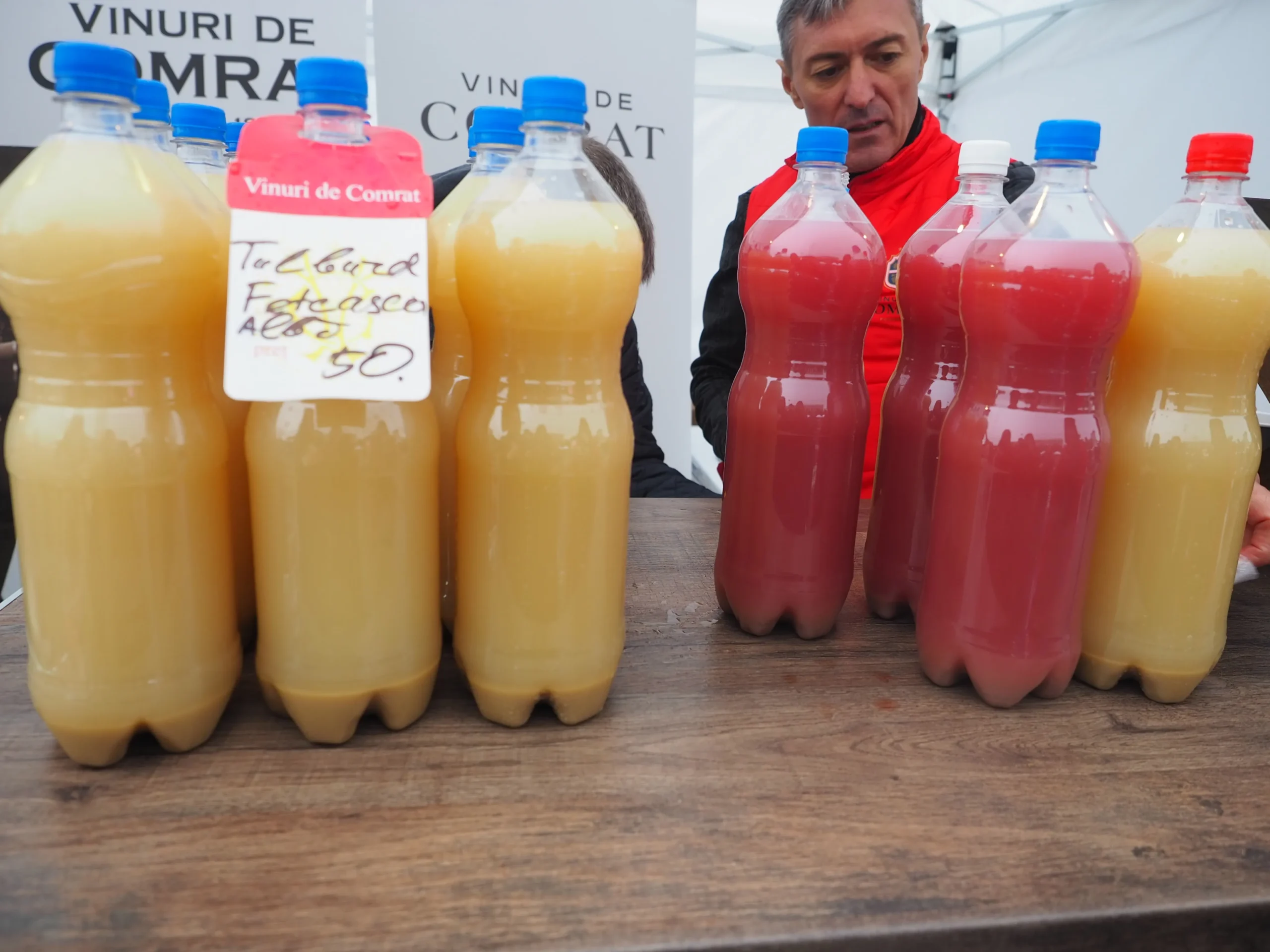


Leave a Reply